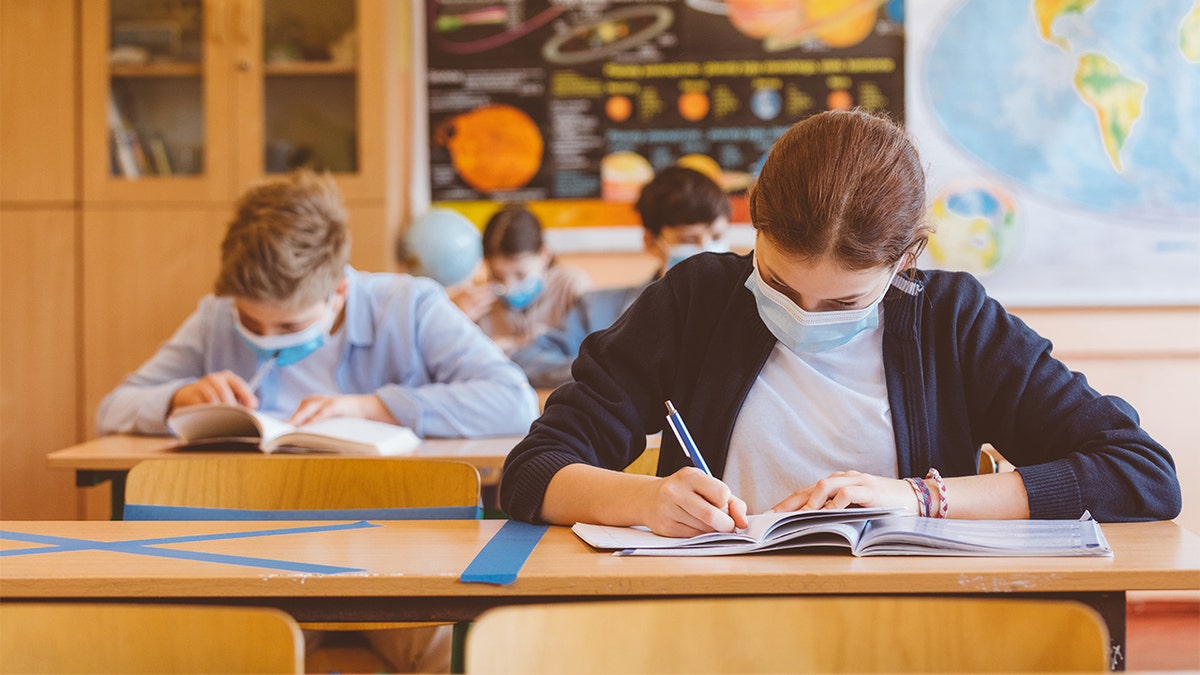Teachers unions didn't listen to parents during the entire process: Griff Jenkins
'The Big Weekend Show' panelists discuss an op-ed from the New York Times Editorial Board admitting the harm of COVID-19 school closures.
An op-ed from the New York Times editorial board is shining a light on the harms of COVID-19 school closures and its effect on children.
The op-ed, titled "The Startling Evidence on Learning Loss Is In," argues taking millions of children out of school during the start of the pandemic "may prove to be the most damaging disruption in the history of American education."
"It also set student progress in math and reading back by two decades and widened the achievement gap that separates poor and wealthy children," the editorial board wrote.
PANDEMIC LEARNING LOSS COULD COST STUDENTS THOUSANDS IN INCOME OVER THEIR LIFETIME: STUDY

The NYT editorial board called learning loss due to COVID-19 one of the greatest "damaging" disruptions to education. (iStock)
It also noted that learning loss is being compounded by student absenteeism as children returned to the classroom.
"In the early grades, these missing children are at greater risk of never mastering the comprehension skills that make education possible. The more absences these students accumulate, the more they miss out on the process of socialization through which young people learn to live and work with others," the op-ed continued. "The more they lag academically, the more likely they are to drop out."
Fox News’ Charlie Hurt said the impact of school closures on children and their education was "predicted in real time as we went through [the pandemic]."
He argued on "The Big Weekend Show" that the "most disturbing" part of the closures was that children from poor families would be the ones impacted the most because education is one of their "greatest hopes" to reach their "full stature in the economy."

Schools across the country canceled in person classes and switched to remote learning. (Reuters/Jim Vondruska)
"If you talk to anybody who is hiring young people today, they will tell you that one of their biggest challenges is hiring people who are going to come to work because they're so used to... They've been through this experience with doing school remotely and as you point out, it also leads to the sort of, you know, all of the obvious problems with testing and stuff, but also like an explosion of anxiety and the inability to sort of work through problems that you learn by, you know, navigating a school day," Hurt said. "And as uncomfortable as that may be, there's a point to it- you learn things from it."
The Times noted after-school programs, summer school and extra tutoring are some steps states are taking to address students’ learning loss.
Co-host Dr. Nicole Saphier argued there was no sense of urgency and a lack of accountability to address the issue.

Parents and students protest at the Santa Monica - Malibu Unified School District on Thursday, Dec. 17, 2020 in Santa Monica, CA to demand that the children be let back to school as soon as its safe. They are protesting the decision by the district to not reopen the schools as COVID cases dropped. (Myung J. Chun / Los Angeles Times via Getty Images)
CLICK HERE TO GET THE FOX NEWS APP
"They [schools] were given $190 million by Congress during COVID. At the beginning of 2023, an average of 50% of that money was used by the schools. Only 20% of that money was even allocated for [the] learning loss of our children. But you know what they did spend $20 million on? The DEI programs in these schools," she said. "They don't take it seriously. We have an entire generation of kids who don't have the social skills, the academics to actually become functioning members of society, to be able to earn admirable wages. And it's not just going to be these kids who are suffering. It is our entire society. Shame on them."
For more Culture, Media, Education, Opinion, and channel coverage, visit foxnews.com/media

